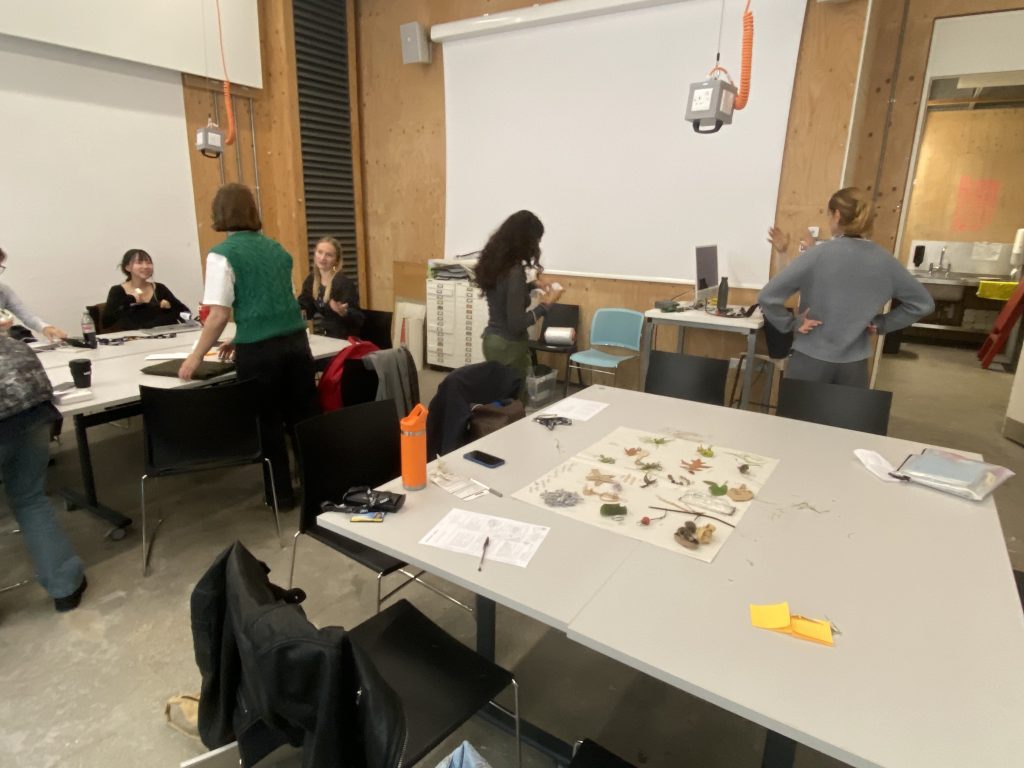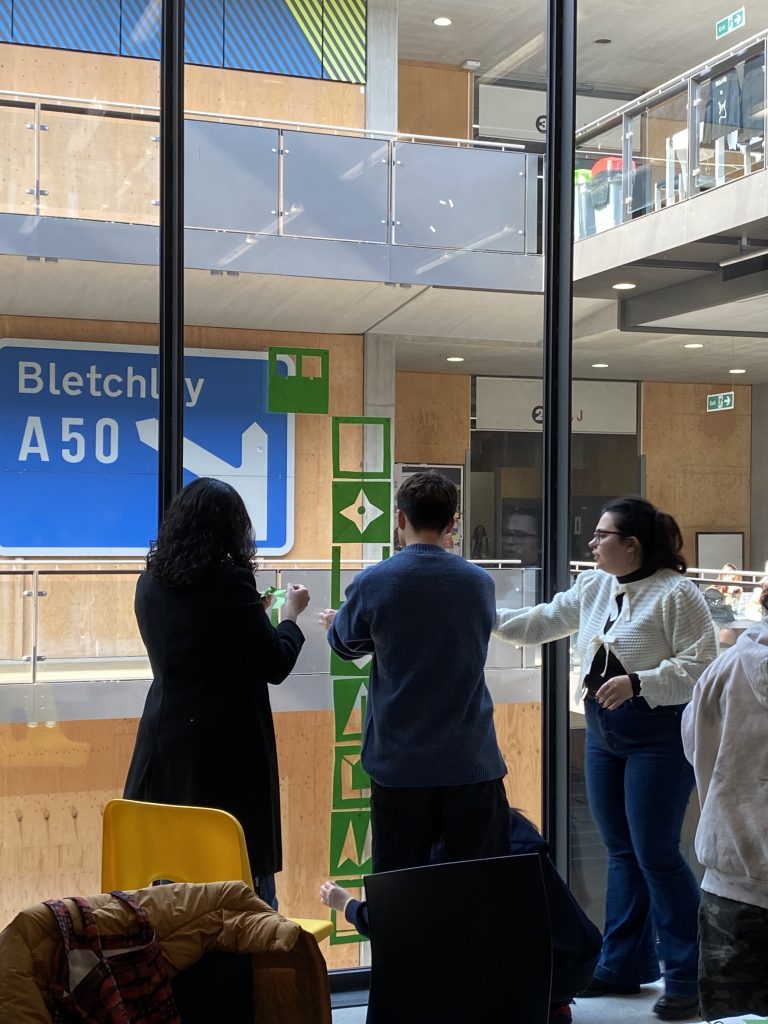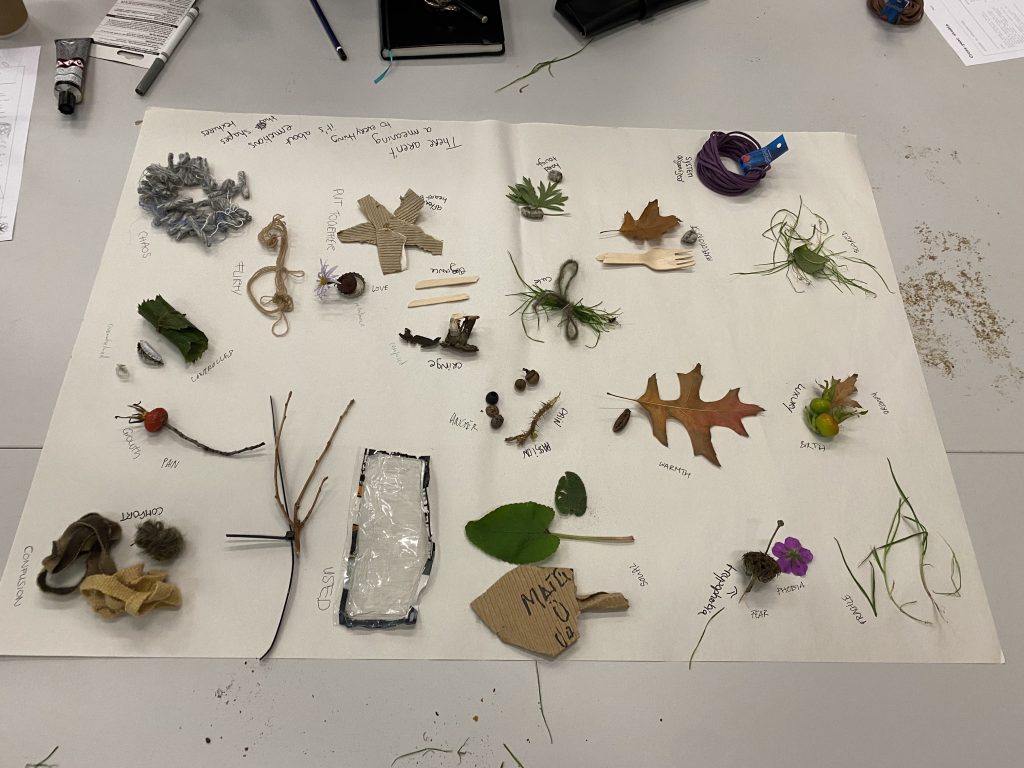
This studio session focused on the alphabet as an infrastructure. Led by Rebecca and Cai, we discussed a series of questions in small groups of 6:
- How do writing systems change over time, and what aspects of them resist change?
Here, we discussed how language and text evolve over time through generations modernising the language and text. One good example we came up with was how technology has caused us to shorten words over time to save effort. Moreover, another good example was how Mandarin now has a “traditional” and “simplified” version of characters to better accommodate more people. What we identified to resist change is grammar and the alphabet as a form of communication.
2. Who controls the alphabets we use?
We agreed that the alphabet is controlled by the media and ‘trends’ pushed by the media, which creates new slang and terms that over time replace words or phrases previously used. Someone also suggested that governments had a hand in how we used the alphabet through censorship and propaganda.
3. In what ways can alphabets reflect cultural or personal identity?
An interesting point was raised on how one’s handwriting can reflect one’s culture or identity in multiple ways: left-handed people tend to struggle with writing in italics, and they also tend to smudge their letters as they write; French people tend to write in cursive as that is how the alphabet is taught in early years; people who write using characters (typically an Asian or Arabic language) tend to write very small letters).
4. What do alphabets (whether pictographic, phonetic or otherwise) do, and how?
We discussed that the alphabet was a form of communication, as it can be verbalised and visualised. Even in ancient languages where the alphabet is just a series of images, they still communicate a message.
5. what features do alphabets need to be able to work?
We didn’t get to finish discussing this question due to time constraints.

Brief
Our brief for this workshop was to design a set of characters for a new phonetic alphabet. The brief had some constraints, such as needing to be composed of at least 10 elements, and fitting a series of random scenarios given to us:
- used over a long distance
- Works only in the dark
- for use between children
- used underwater
- used only via touch
- used for numbers only
Our group decided to make something that you can touch and feel the words through emotions. For example, something prickly evokes fear, pain, anger. We decided to go around campus and collect found objects from nature and items that people threw on the ground. When we got back to the classroom, we assembled them according to their likeness to other materials we found and wrote what emotions or feelings it evoked from us. From this, we developed an alphabet that was raw with emotions and nature.

This was an interesting workshop for me as it forced me out of my comfort zone and allowed me to explore outside of the classroom. My first instinct was to make an alternative version of the Latin alphabet, but my group helped me steer my thinking away from the alphabet as we know it and come up with something entirely abstract.
Leave a Reply